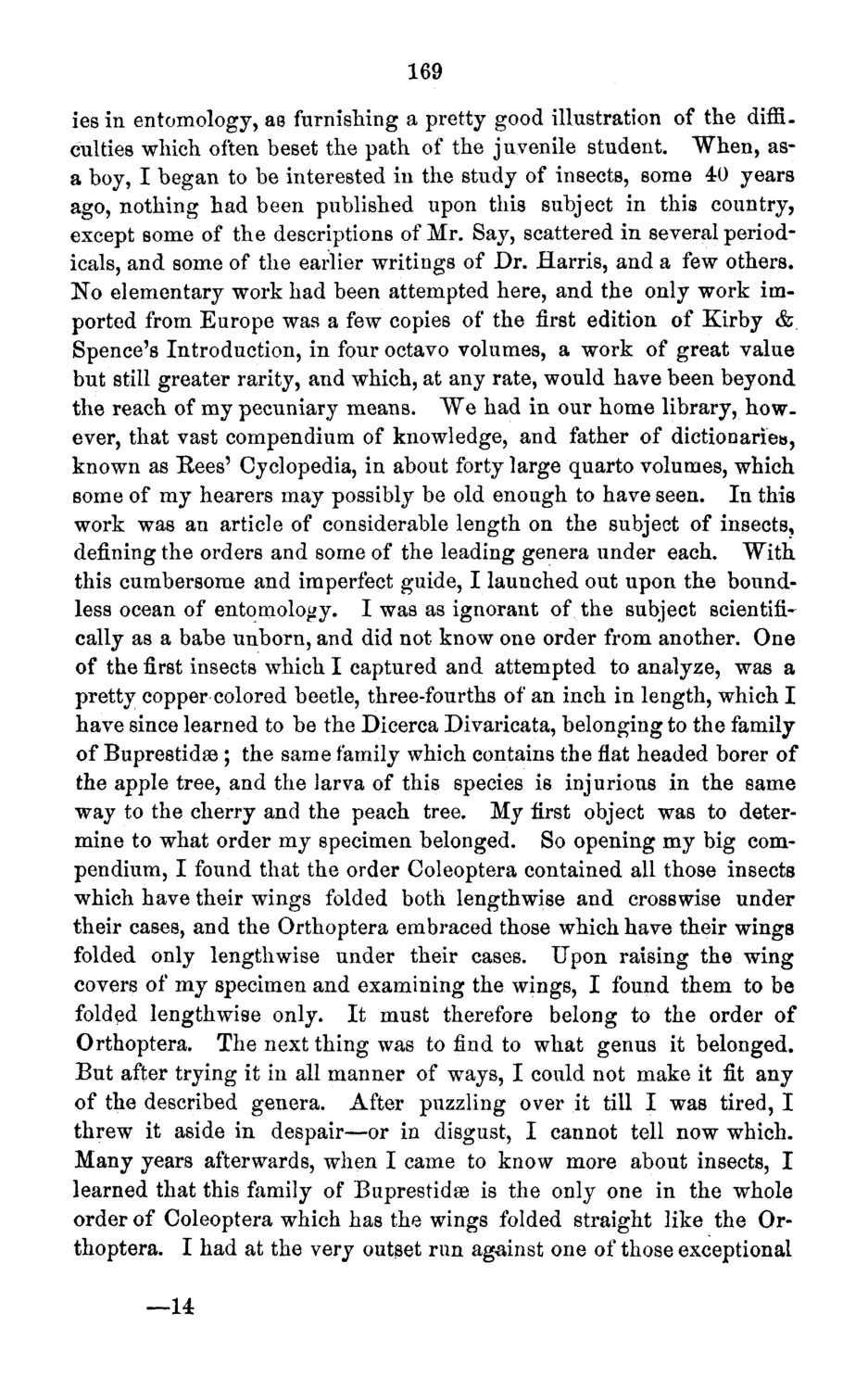| |
| |
Caption: Board of Trustees Minutes - 1871
This is a reduced-resolution page image for fast online browsing.

EXTRACTED TEXT FROM PAGE:
169 ies in entomology, as furnishing a pretty good illustration of the difficulties which often beset the path of the juvenile student. When, asa boy, I began to be interested in the study of insects, some 40 years ago, nothing had been published upon this subject in this country, except some of the descriptions of Mr. Say, scattered in several periodicals, and some of the earlier writings of Dr. Harris, and a few others. No elementary work had been attempted here, and the only work imported from Europe was a few copies of the first edition of Kirby & Spence's Introduction, in four octavo volumes, a work of great value but still greater rarity, and which, at any rate, would have been beyond the reach of my pecuniary means. W e had in our home library, however, that vast compendium of knowledge, and father of dictionaries, known as Bees' Cyclopedia, in about forty large quarto volumes, which some of my hearers may possibly be old enough to have seen. In this work was an article of considerable length on the subject of insects, defining the orders and some of the leading genera under each. With this cumbersome and imperfect guide, I launched out upon the boundless ocean of entomology. I was as ignorant of the subject scientifically as a babe unborn, and did not know one order from another. One of the first insects which I captured and attempted to analyze, was a pretty copper colored beetle, three-fourths of an inch in length, which I have since learned to be the Dicerca Divaricata, belonging to the family of Buprestidae ; the same family which contains the flat headed borer of the apple tree, and the larva of this species is injurious in the same way to the cherry and the peach tree. My first object was to determine to what order my specimen belonged. So opening my big compendium, I found that the order Coleoptera contained all those insects which have their wings folded both lengthwise and crosswise under their cases, and the Orthoptera embraced those which have their wings folded only lengthwise under their cases. Upon raising the wing covers of my specimen and examining the wings, I found them to be folded lengthwise only. It must therefore belong to the order of Orthoptera. The next thing was to find to what genus it belonged. But after trying it in all manner of ways, I could not make it fit any of the described genera. After puzzling over it till I was tired, I threw it aside in despair—or in disgust, I cannot tell now which. Many years afterwards, when I came to know more about insects, I learned that this family of Buprestidse is the only one in the whole order of Coleoptera which has the wings folded straight like the Orthoptera. I had at the very outset run against one of those exceptional —14
| |